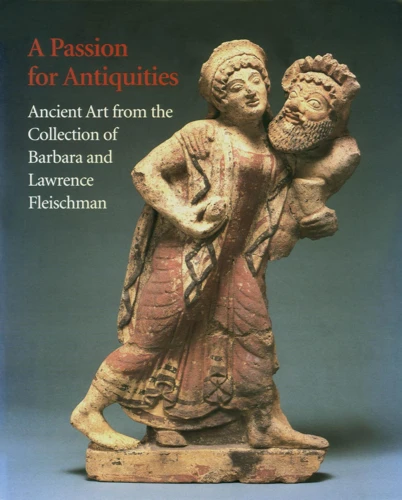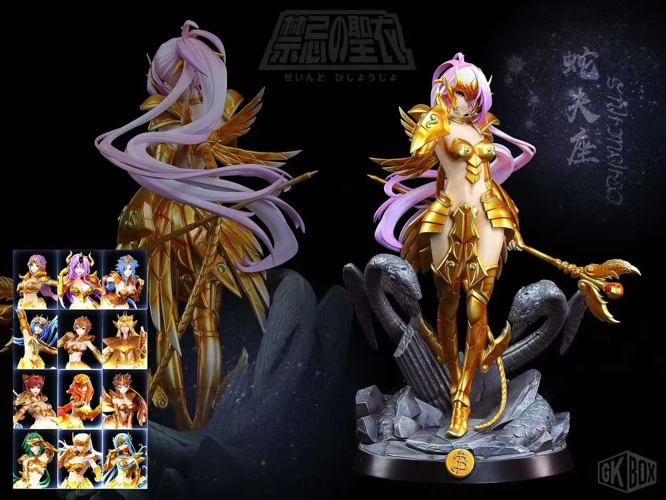Imagine a mythical world where the very fabric of existence is upheld by the delicate balance between order and chaos. In the captivating realm of Egyptian mythology, this cosmic harmony is personified by the goddess Ma’at. Her enigmatic presence permeates every aspect of ancient Egyptian society, from religious rituals to the administration of justice. In this thought-provoking article, we delve into the depths of Ma’at’s myth, exploring her origins as well as her significance as the embodiment of balance. Discover the symbolism behind Ma’at’s feather, which influences the afterlife judgement of souls, and uncover the profound impact she had on the Pharaohs and their leadership. Join us on a journey through the annals of history as we unravel the legacy of Ma’at, a goddess whose influence continues to resonate even in modern times.
Contents
- The Myth of Ma’at
- The Symbolism of Balance
- The Influence of Ma’at
- Legacy of Ma’at
- Conclusion
-
Frequently Asked Questions
- 1. What does the name “Ma’at” mean?
- 2. How was Ma’at depicted in Egyptian art?
- 3. What was the purpose of Ma’at’s feather?
- 4. Were there any rituals associated with Ma’at?
- 5. How did Ma’at influence Egyptian law and justice?
- 6. Did Ma’at have any association with the pharaohs?
- 7. Did Ma’at have any influence beyond Egyptian mythology?
- References
-
Frequently Asked Questions
- 1. What is the significance of Ma’at in Egyptian mythology?
- 2. How was Ma’at portrayed in ancient Egyptian art?
- 3. Did Ma’at have any mythical siblings or family members?
- 4. How did Ma’at influence the daily lives of ancient Egyptians?
- 5. Did Ma’at have any temples dedicated to her worship?
- 6. How did Ma’at impact the legal system of ancient Egypt?
- 7. Was Ma’at associated with the pharaohs and their leadership?
- 8. What happened during the “Weighing of the Heart” ceremony?
- 9. Did Ma’at have any festivals or celebrations dedicated to her?
- 10. How did Ma’at leave her mark on Egyptian society and culture?
- References
- Read More
The Myth of Ma’at

Ma’at, the goddess of balance, is a central figure in Egyptian mythology. Her myth revolves around the concept of cosmic harmony and the preservation of order in the universe. The origin of Ma’at is shrouded in mystery, with some accounts suggesting that she emerged from the primordial chaos along with the sun god Ra. Others believe that she is the daughter of the sky god, Atum. Regardless of her origins, Ma’at is depicted as a goddess with ostrich feathers on her head, symbolizing truth, justice, and balance. She embodies the principles of truth, balance, and justice, and her presence is felt in every aspect of Egyptian society. Ancient Egyptians believed that the balance upheld by Ma’at was crucial for the smooth functioning of the world, and her influence extended beyond the realm of mythology into the daily lives of the people.
1. The Origin of Ma’at
The origin of Ma’at is a topic of much speculation and intrigue. In Egyptian mythology, there are various accounts that attempt to explain the emergence of this important goddess. One belief is that Ma’at came into existence alongside the sun god Ra, emerging from the primeval chaos. According to this myth, Ra brought forth Ma’at to establish order and balance in the universe. Another account suggests that Ma’at is the daughter of Atum, the sky god who created the world. In this version, Ma’at is seen as an inherent aspect of creation, an essential force that maintains the equilibrium of the cosmos. Regardless of her precise origins, Ma’at is revered as the embodiment of truth, justice, and balance. She is often depicted with a feather on her head, representing her role in the weighing of the heart during the afterlife judgment. The feather symbolizes the measure of one’s adherence to Ma’at’s principles of truth and righteousness. Whether she arose from chaos or was born from a divine entity, Ma’at’s importance in Egyptian mythology cannot be overstated. Her presence permeated every aspect of life, guiding the actions and beliefs of the ancient Egyptians.
2. Ma’at as a Goddess
Ma’at is not only a concept but also a powerful goddess in Egyptian mythology. As the personification of balance, truth, and justice, she plays a crucial role in the cosmic order. Ma’at is often depicted as a woman wearing an ostrich feather on her head, symbolizing the weight of truth. Her physical representation embodies the principles she stands for – the feather representing truth and her feminine form embodying the nurturing and compassionate aspects of justice. As a goddess, Ma’at is revered for her moral and ethical teachings. She is considered the moral compass for humanity, guiding individuals towards righteous conduct and proper behavior. Ma’at stands prominently in ancient Egyptian religious texts, where prayers and hymns are dedicated to her divine presence. It is believed that by living in accordance with Ma’at’s principles, individuals can achieve Ma’at in their own lives and contribute to the harmony of the universe. Her influence extends beyond myth and religion, reflecting the intrinsic value Egyptians placed on balance and order in their society. The reverence for Ma’at as a goddess reinforces the significance of moral conduct and the pursuit of justice in ancient Egyptian culture, providing a guiding light for personal and societal well-being.
The Symbolism of Balance

At the core of Ma’at’s existence lies the profound symbolism of balance. Ma’at’s feather, intricately connected to the concept of equilibrium, plays a pivotal role in the afterlife judgement of souls. According to Egyptian belief, the hearts of the deceased were weighed against the feather of Ma’at to determine their fate in the afterlife. If the heart was found to be lighter than the feather, it signified a life lived in harmony with Ma’at’s principles, and the soul could proceed to eternal paradise. However, if the heart proved to be heavy, burdened with deeds and thoughts that disrupted the delicate equilibrium, the soul faced the daunting possibility of eternal unrest. The symbolism of Ma’at’s feather reminds us of the importance of balance in all aspects of our lives, both spiritually and morally. It prompts us to consider the consequences of our actions and the impact they may have on the cosmic order. Just as the stars in the Cassiopeia constellation align with precise balance, so too must we strive to find our own equilibrium in a world that often teeters on the edge of chaos.
1. Ma’at’s Feather and the Weighing of the Heart
The symbol of Ma’at’s feather and the weighing of the heart is one of the most iconic and powerful aspects of Egyptian mythology. According to ancient Egyptian beliefs, after death, the souls of the deceased would undergo a trial known as the “Weighing of the Heart” in the Hall of Ma’at. During this trial, the heart of the individual would be placed on one side of the scales, while on the other side, the feather of Ma’at, representing truth and balance, would be placed. The heart was believed to be the seat of a person’s conscience and moral character. If the heart was lighter than the feather, it meant that the individual had led a virtuous life in accordance with the principles of Ma’at. This would result in the soul being granted eternal life and a blissful existence in the afterlife. However, if the heart was heavier than the feather, it indicated a life filled with wrongdoing and imbalance. In this case, the soul would be devoured by the monstrous goddess Ammit, a fate considered to be the ultimate punishment. The weighing of the heart was not only a measure of an individual’s moral standing but also a reminder of the importance of upholding truth and balance in all aspects of life. It served as a powerful incentive for individuals to live in accordance with the principles of Ma’at during their earthly existence, knowing that their actions would ultimately be judged in the afterlife. The symbolism of Ma’at’s feather and the weighing of the heart underscores the Egyptians’ deep reverence for balance, justice, and the pursuit of truth.
2. Ma’at’s Role in Egyptian Society
Ma’at’s role in Egyptian society was multidimensional and far-reaching. She was not only a revered goddess but a guiding principle that governed the moral and ethical behavior of individuals as well as the functioning of the entire society. In the realm of law and justice, Ma’at held immense significance. It was believed that her presence ensured fair and just trials, and her feather was used as a symbol of truth in the courtroom. Judges and officials would often swear oaths by Ma’at when rendering judgments. The idea of balance and harmony extended beyond the judicial system and permeated into various aspects of daily life. It influenced interpersonal relationships, business transactions, and even the management of natural resources. In the field of politics, Ma’at played a crucial role in the legitimacy of the pharaoh’s rule. The pharaoh was considered the embodiment of Ma’at on Earth and responsible for upholding the principles of justice and order. This belief bestowed upon the pharaoh immense power and authority, as they were seen as a divine force in maintaining a balanced society. Ma’at’s influence extended to the common people as well. It was believed that by living a life in accordance with the principles of Ma’at, individuals could achieve personal harmony and well-being. In this way, the concept of Ma’at’s balance permeated the social fabric and served as a guiding light for the ancient Egyptians in their pursuit of a virtuous and harmonious life.
The Influence of Ma’at

The influence of Ma’at in ancient Egyptian society was profound and far-reaching. As the embodiment of balance and justice, Ma’at played a pivotal role in shaping the legal and ethical framework of the civilization. Her principles guided the Egyptian concepts of right and wrong, influencing the development of laws and regulations. Ma’at’s emphasis on truth and fairness led to the establishment of a comprehensive legal system focused on maintaining order and harmony. This system extended to various areas, including property rights, inheritance, and even criminal justice. The concept of Ma’at also had a direct impact on the leadership of the Pharaohs. The Pharaoh, as the ruler of Egypt, was seen as the earthly embodiment of Ma’at and responsible for upholding the balance in society. This connection between Ma’at and the Pharaohs legitimized their authority and emphasized the importance of just and fair governance. The influence of Ma’at extended beyond the realms of mythology and religion, shaping the very fabric of Egyptian society and its systems of law and leadership.
1. Ma’at’s Impact on Egyptian Law and Justice
Ma’at’s impact on Egyptian law and justice cannot be overstated. The ancient Egyptians believed that the principles upheld by Ma’at were not only spiritual but also had a direct bearing on the legal system and the administration of justice. Ma’at served as the standard by which all legal proceedings and judgments were measured. The concept of balance and fairness, embodied by Ma’at, guided the courts in their decision-making processes. Judges used her principles as a benchmark to ensure that justice was served and that every individual was treated equitably.
In Egyptian society, the belief in Ma’at’s influence on law and justice was deeply ingrained. The Pharaoh, as the representative of Ma’at on Earth, was responsible for upholding her principles in the governance of the kingdom. The laws were seen as a reflection of Ma’at’s will, and any violations were considered offenses against divine order. Punishments for crimes were designed to restore balance and uphold Ma’at’s ideals, rather than being solely punitive in nature.
The legal system itself was intricately linked with religious rituals and ceremonies. Trials and hearings often took place in temples, reinforcing the connection between law, justice, and divine order. During these proceedings, oaths were sworn in the name of Ma’at, emphasizing the importance of truthfulness and integrity in the pursuit of justice.
Ma’at’s influence extended not only to the courtrooms but also to the daily lives of the Egyptian people. In their interactions with one another, individuals were expected to embody the principles of Ma’at, resolving disputes amicably and striving for harmony. This emphasis on balance and fairness in personal relationships helped maintain social cohesion and minimize conflicts within the community.
The enduring impact of Ma’at’s influence on Egyptian law and justice can still be seen in the modern world. The concept of fairness, the pursuit of truth, and the ideal of maintaining balance continue to be the cornerstones of legal systems in many societies. Ma’at’s legacy serves as a reminder of the timeless principles that underpin our notions of justice, and her image still resonates as a symbol of equilibrium in an ever-changing world.
2. Ma’at’s Connection to Pharaohs and Leadership
In Egyptian mythology, Ma’at’s connection to Pharaohs and leadership is of paramount importance. The Pharaoh, considered the earthly embodiment of the gods and the ultimate authority in ancient Egypt, was seen as the guardian of Ma’at. It was believed that the Pharaoh’s role was to maintain order and harmony in society, mirroring the cosmic balance represented by Ma’at. As such, the Pharaoh was responsible for upholding justice, ensuring the well-being of the people, and adhering to the principles of Ma’at in their rule. This connection between Ma’at and Pharaohs extended beyond just governance; it was also deeply intertwined with religious rituals and ceremonies. Pharaohs performed sacred rituals to honor Ma’at and seek her blessings for their reign. These rituals were seen as essential for maintaining Ma’at’s cosmic harmony and ensuring the prosperity and stability of the kingdom. Ma’at’s presence in the Pharaoh’s life was evident in the imagery and symbolism employed by the rulers. Pharaohs often depicted themselves as being in direct communication with Ma’at, symbolized by the goddess placing her feather on the Pharaoh’s head as a sign of divine authority. This imagery served to reinforce the Pharaoh’s role as a custodian of Ma’at’s balance and underscored their legitimacy as a leader. It is through this intricate connection between Ma’at and Pharaohs that the concept of balance and harmony reigned supreme in the ancient Egyptian civilization.
Legacy of Ma’at

The legacy of Ma’at, the embodiment of balance and justice in Egyptian mythology, stretches far beyond the ancient world. Her principles continue to resonate and inspire to this day. One significant aspect of Ma’at’s legacy is her influence on ethical and moral values. The concept of balance and harmony, central to Ma’at’s teachings, has had a lasting impact on various cultures and belief systems. The idea of upholding justice, truth, and equality can be traced back to the teachings of Ma’at. The symbolic representation of Ma’at’s feather, where the hearts of the deceased are weighed against it, serves as a reminder of the importance of living a righteous life. This belief in the importance of balance and moral conduct has transcended time, influencing ethical frameworks and guiding principles in different societies.
Ma’at’s legacy extends to the realms of law and governance. In ancient Egypt, Ma’at was intricately connected to the legal system and played a crucial role in ensuring a just society. Judges and rulers were expected to uphold the principles of Ma’at in their decision-making processes and governance. This emphasis on fairness and equity in law has left a profound impact on legal systems around the world. The concept of impartial justice, of weighing evidence and considering the consequences of actions, can be traced back to the fundamental principles of Ma’at.
Additionally, Ma’at’s influence can be seen in the realm of leadership. The Pharaohs of ancient Egypt were believed to be the earthly embodiment of Ma’at. They were entrusted with the responsibility of maintaining balance and order in the kingdom. The Pharaohs sought Ma’at’s guidance in matters of governance, using her teachings as a moral compass. This connection between Pharaohs and Ma’at highlights the significance of divine guidance and ethical leadership in ancient Egyptian society. It serves as a reminder of the timeless importance of virtuous leadership and the pursuit of balance in positions of power.
In contemporary times, Ma’at’s legacy lives on as a symbol of harmony and truth. Her teachings continue to inspire individuals to seek balance in their lives, to strive for justice, and to uphold moral values. The profound impact of Ma’at’s legacy can be seen in various aspects of human society, from legal and ethical frameworks to leadership principles. She remains both a mythical deity and a guiding principle, reminding us of the eternal value of balance and righteousness.
Conclusion

In conclusion, the goddess Ma’at and the concept of balance in Egyptian mythology hold significant importance in understanding the ancient Egyptian worldview. Ma’at represents the delicate equilibrium between order and chaos, truth and falsehood, and justice and injustice. Her myth encompasses the creation and maintenance of cosmic harmony, and her role in Egyptian society cannot be overstated. Through the symbolism of the feather and the weighing of the heart, Ma’at influences the afterlife judgment of souls, ensuring that only those who lived in accordance with truth and balance can achieve eternal life. Moreover, Ma’at’s impact extends beyond the spiritual realm and into Egyptian law and governance. The principles of ma’at guided the legal system, emphasized the fair treatment of individuals, and shaped the ideal behavior of rulers. Even today, the legacy of Ma’at resonates, reminding us of the enduring value of balance, justice, and truth in our own lives. As we reflect upon the significance of Ma’at, we are reminded to strive for equilibrium and harmony, both individually and within the broader world around us.
Frequently Asked Questions

1. What does the name “Ma’at” mean?
The name “Ma’at” translates to “truth” or “justice” in ancient Egyptian. It represents the concept of cosmic balance and order.
2. How was Ma’at depicted in Egyptian art?
Ma’at was often depicted as a woman wearing an ostrich feather on her head. This feather symbolized truth and was considered the measure of a person’s heart during the afterlife judgment.
3. What was the purpose of Ma’at’s feather?
Ma’at’s feather had a profound significance in Egyptian mythology. During the weighing of the heart ceremony, a person’s heart was placed on one side of a scale, while the feather of Ma’at was placed on the other. If the heart was lighter than the feather, the person was considered to have lived in accordance with Ma’at’s principles and would attain eternal life.
4. Were there any rituals associated with Ma’at?
Absolutely. The ancient Egyptians held ceremonies and rituals dedicated to Ma’at, particularly during the New Year festivals. These rituals aimed to restore balance and order in the world, renewing the cosmic harmony upheld by Ma’at.
5. How did Ma’at influence Egyptian law and justice?
Ma’at was closely connected to the administration of justice in ancient Egypt. The pharaoh, as the embodiment of Ma’at on Earth, was responsible for maintaining order and ensuring fair judgment in legal matters. Egyptian laws were based on the principles of Ma’at, emphasizing truth, fairness, and equality.
6. Did Ma’at have any association with the pharaohs?
Yes, Ma’at played a significant role in the lives of the pharaohs. They were considered the living representatives of Ma’at and were tasked with upholding balance and justice in the kingdom. The pharaohs’ rule was believed to be legitimate as long as they governed in accordance with the principles of Ma’at.
7. Did Ma’at have any influence beyond Egyptian mythology?
Absolutely. The concept of balance and justice represented by Ma’at had a profound impact on various aspects of ancient Egyptian culture, including art, architecture, and religious beliefs. Ma’at’s influence can still be seen today in the remnants of the temples and tombs dedicated to her worship.
References
- Maat
- Ma’at: The Goddess and Principles of Truth and Wisdom
- Ma’at | Meaning & Principles – Video & Lesson Transcript
Frequently Asked Questions

1. What is the significance of Ma’at in Egyptian mythology?
Ma’at holds great importance in Egyptian mythology as she represents the concept of balance, harmony, and truth. She is essential for maintaining order in the world.
2. How was Ma’at portrayed in ancient Egyptian art?
Ma’at was often depicted as a goddess with ostrich feather in her hair, symbolizing truth and justice. She was also shown with scales, representing the weighing of the heart in the afterlife.
3. Did Ma’at have any mythical siblings or family members?
While Ma’at is primarily known as a concept and goddess rather than a person with a family, she is sometimes associated with the god Thoth, who is considered her husband or brother in certain myths.
4. How did Ma’at influence the daily lives of ancient Egyptians?
Ma’at played a significant role in the lives of ancient Egyptians as they believed that aligning their actions with the principles of Ma’at would bring order, justice, and prosperity to society.
5. Did Ma’at have any temples dedicated to her worship?
Yes, Ma’at had temples dedicated to her worship in ancient Egypt. The most famous temple dedicated to her was located in Karnak, near modern-day Luxor.
6. How did Ma’at impact the legal system of ancient Egypt?
Ma’at’s principles of truth, fairness, and balance were deeply integrated into the legal system of ancient Egypt. Judges were expected to uphold these principles while delivering justice.
7. Was Ma’at associated with the pharaohs and their leadership?
Yes, Ma’at was closely associated with the pharaohs and their leadership. Pharaohs were considered the living embodiment of Ma’at and it was their duty to uphold and protect her principles.
8. What happened during the “Weighing of the Heart” ceremony?
The “Weighing of the Heart” ceremony was a crucial event in the afterlife judgment. The heart of the deceased was weighed against Ma’at’s feather of truth. If the heart was lighter than the feather, the person was deemed virtuous and could enter the afterlife.
9. Did Ma’at have any festivals or celebrations dedicated to her?
Absolutely! Ma’at had several festivals and celebrations dedicated to her throughout the year. The Festival of Ma’at was a grand celebration where people made offerings and performed rituals to honor and maintain balance in the world.
10. How did Ma’at leave her mark on Egyptian society and culture?
Ma’at left a lasting mark on Egyptian society and culture by instilling a sense of morality, ethics, and balance in all aspects of life. Her principles guided the Egyptians in their everyday actions and decision-making processes.







